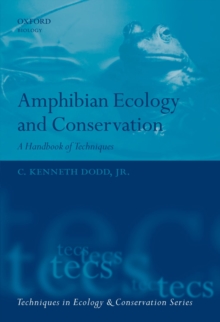
Remote Sensing for Ecology and Conservation : A Handbook of Techniques Paperback / softback
by Ned (Center for Biodiversity and Conservation, American Museum of Natural History, New York Horning, Julie A. (NASA Johnson Space Center, USA) Robinson, Eleanor J. (Center for Biodiversity and Conservation, American Museum of Natural History, Sterling, Woody (NASA Headquarters, USA) Turner, Sacha (Center for Biodiversity and Conservation, American Museum of Natural History, New Yo Spector
Part of the Techniques in Ecology & Conservation series
Paperback / softback
Description
The work of conservation biology has grown from local studies of single species into a discipline concerned with mapping and managing biodiversity on a global scale.
Remote sensing, using satellite and aerial imaging to measure and map the environment, increasingly provides a vital tool for effective collection of the information needed to research and set policy for conservation priorities.
The perceived complexities of remotely sensed data and analyses have tended to discourage scientists and managers from using this valuable resource.
This text focuses on making remote sensing tools accessible to a larger audience of non-specialists, highlighting strengths and limitations while emphasizing the ways that remotely sensed data can be captured and used, especially for evaluating human impacts on ecological systems.
Information
-
Out of stock
- Format:Paperback / softback
- Pages:496 pages, 150 illustrations in full colour
- Publisher:Oxford University Press
- Publication Date:01/07/2010
- Category:
- ISBN:9780199219957
Information
-
Out of stock
- Format:Paperback / softback
- Pages:496 pages, 150 illustrations in full colour
- Publisher:Oxford University Press
- Publication Date:01/07/2010
- Category:
- ISBN:9780199219957










